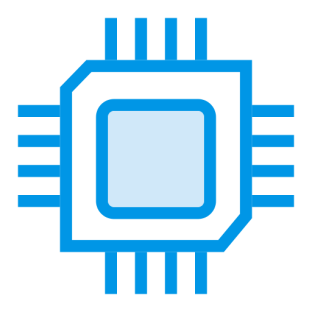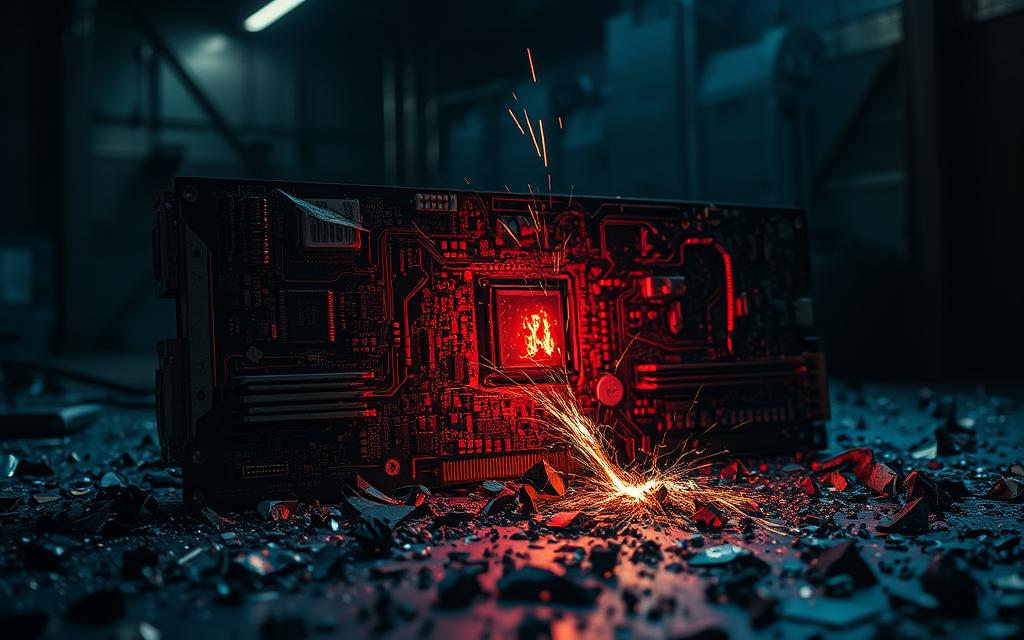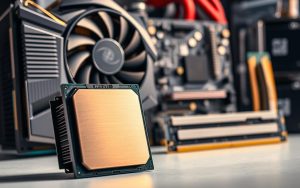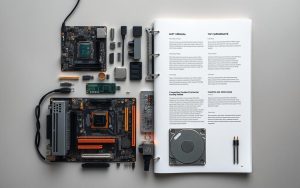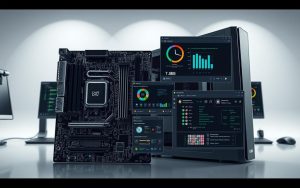Computer viruses pose a serious threat to our tech systems. The 2007 Storm worm infected millions of PCs through fake news tactics. Understanding these digital threats is key to protecting our devices.
Malware can impact computer systems in many ways. Some programs can even infiltrate critical components like the BIOS. This can affect basic hardware operations.
The first Apple virus, Elk Cloner, appeared in 1982. Today, thousands of active threats circulate online. These viruses can harm different operating systems.
Computer viruses are not just digital threats. They can steal sensitive data and potentially damage hardware. The U.S. Cybersecurity Agency warns about infected email attachments spreading viruses.
Protecting against viruses requires a thorough approach. About 75% of malware infections come from user actions. Knowing these threats is crucial for strong digital security.
Understanding Computer Viruses and Malware Basics
Computer viruses pose a major threat to cybersecurity. These harmful programs can infiltrate systems and compromise sensitive data. Learning about malware types is key to protecting digital assets.
Computer viruses are self-replicating programs that spread and cause harm. They can multiply across networks, email attachments, and external storage devices. Unlike regular software, viruses operate without user permission.
What Defines a Computer Virus
A computer virus is characterized by its ability to:
- Replicate itself automatically
- Spread between computer systems
- Potentially damage or alter system functionality
- Operate without user consent
Different Types of Malware Threats
Malware comes in various forms, each with unique characteristics:
| Malware Type | Primary Function | Potential Damage |
|---|---|---|
| Worms | Network Replication | System Resource Consumption |
| Trojans | Unauthorized Access | Data Theft |
| Ransomware | File Encryption | Financial Extortion |
How Viruses Spread Between Devices
Malware spread occurs through multiple channels:
- Email attachments
- Compromised websites
- Infected USB drives
- Network vulnerabilities
- Peer-to-peer download platforms
The Gameover ZeuS botnet shows how advanced viruses use many distribution methods. This highlights the need for strong cybersecurity strategies.
Does Computer Virus Affect Computer Hardware?
Computer viruses can cause major system damage without destroying physical parts. They typically slow down performance and disrupt software. Viruses don’t usually break hardware components directly.
Viruses can infiltrate critical system areas, potentially causing serious hardware effects. They might attack core system operations in various ways.
- Manipulating BIOS settings
- Disrupting input/output operations
- Overloading system resources
- Interfering with hardware communication protocols
The Gameover ZeuS botnet virus from 2013 showed how malware could harm system integrity. It stole sensitive information and caused frequent crashes. The virus also dramatically slowed down computer performance.
To protect against these threats, take proactive steps. Install reliable antivirus software and run regular system scans.
- Install reliable antivirus software
- Conduct regular system scans
- Update security protocols
- Be cautious with email attachments
Viruses can seriously damage your computer system in many ways. They exploit advanced techniques to compromise computer functions at various levels. While they may not physically destroy hardware, they can still cause severe problems.
Common Myths About Computer Viruses Debunked
Many users misunderstand computer viruses, which can put their digital safety at risk. Knowing the truth about these myths is key to protecting your devices.
Experts have found several false beliefs about virus threats. These misconceptions can lead to dangerous practices in computer use.
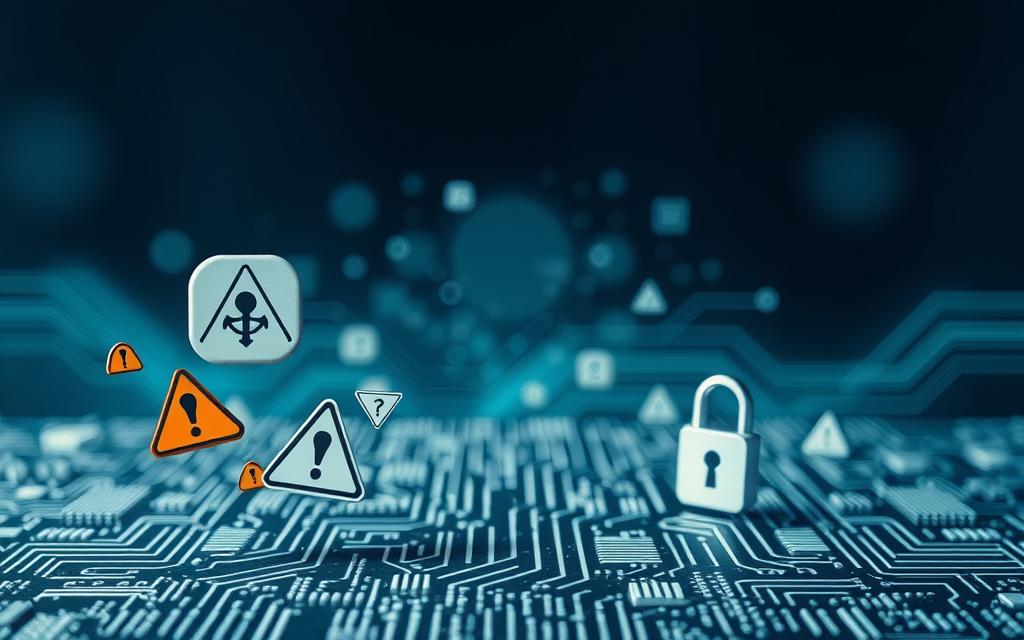
The Mac Immunity Myth
Some think Macs can’t get viruses. This is wrong. In 2023, Mac malware rose by 30%, mostly through trojans in pirated software.
Reality check: Macs are not virus-proof. The first Apple virus, Elk Cloner, appeared in 1982. About 80% of infections happen due to user mistakes.
- Macs are not inherently virus-proof
- The first Apple-specific virus, Elk Cloner, dates back to 1982
- Approximately 80% of malware infections result from human error
Self-Installing Virus Misconception
Viruses don’t install by themselves. Most need user action, like clicking email links or downloading unknown files.
Over 75% of malware attacks start through email links. Executable files (.exe) are often risky. User behavior is crucial in preventing infections.
- Over 75% of malware attacks start through email links
- Executable files (.exe) pose significant risks
- User behavior plays a critical role in infection
Antivirus Company Conspiracy Theory
Some believe antivirus companies make viruses to sell protection. This is false. Reputable firms spend millions to guard against real cyber threats.
Knowing these facts helps users improve their Mac security. It also aids in maintaining strong digital protection overall.
Real Dangers of Computer Viruses
Computer viruses pose a major threat to digital security. They can cause extensive damage to system performance and personal data. These malicious programs infiltrate computers through various channels, disrupting your digital ecosystem.
Virus threats are more than just annoyances. They can compromise your entire digital infrastructure, putting your information at risk.
The most critical dangers of computer viruses include:
- Data Theft: Sophisticated viruses can steal sensitive personal and financial information
- System Performance Degradation: Malware can significantly slow down computer operations
- File Corruption: Viruses may delete or permanently damage critical files
- Network Disruption: Some viruses flood networks, rendering internet connectivity impossible
Modern viruses show alarming abilities to cause harm. The Gameover ZeuS botnet virus from 2013 specialized in ransomware and banking fraud. Cybercriminals constantly develop new ways to exploit system weaknesses.
The financial and privacy risks are serious. Ransomware can encrypt your files and demand payment for restoration. Users must stay alert to virus threats from email attachments and downloads.
Protecting your digital environment requires active steps. Regular system updates and strong antivirus software are crucial. Careful online behavior helps reduce risks from these harmful programs.
Essential Protection Against Computer Viruses
Safeguarding your computer from viruses is vital for digital safety. Over 60% of users face malware attacks in their lifetime. Strong protection strategies are key to maintaining your online security.
Effective virus protection involves more than just antivirus software. It requires a multi-layered defense approach. This combines advanced tech tools with smart user behavior.
Antivirus Software Implementation
Choosing the right antivirus software is crucial for protection. Top-notch solutions can block about 90% of malware threats. They act before these threats can harm your system.
- Choose reputable antivirus software with real-time protection
- Opt for solutions that offer comprehensive threat detection
- Consider additional features like network protection
Regular System Updates
Keeping your system updated is essential for strong cybersecurity. Regular scans and updates can cut malware infection risks by 70%. This simple step greatly improves your digital safety.
- Enable automatic system updates
- Update antivirus software regularly
- Patch potential security vulnerabilities promptly
Safe Browsing Practices
Your online behavior is key to virus protection. Awareness and caution can prevent most potential infections. Smart browsing habits boost your overall digital security.
| Safe Browsing Practice | Risk Reduction |
|---|---|
| Avoid suspicious websites | 75% reduced infection risk |
| Verify email attachments | 60% reduced malware spread |
| Use secure networks | 80% protection against network-based threats |
“Cybersecurity is not a product, but a process.” – Unknown Security Expert
Using these virus protection strategies can greatly reduce malware infection risks. They help create a safer digital environment for you. Stay vigilant and keep your defenses strong.
Conclusion
Computer viruses pose complex threats to digital systems. They can compromise settings, access sensitive data, and disrupt operations. Physical destruction is rare, but cybersecurity remains crucial.
Proactive defense strategies are vital for virus protection. Regular updates, strong antivirus software, and safe browsing habits protect hardware. Most infections modify system files rather than cause permanent physical damage.
Strategic prevention is essential for digital security. Real-time protection and frequent system scans help mitigate risks. Comprehensive data backups are also crucial.
Staying informed about cybersecurity threats is important. A vigilant approach helps safeguard digital assets against malware intrusions. Knowledge and practical measures provide the best defense.
Understanding computer viruses empowers users to make smart choices. This knowledge, combined with security measures, protects against evolving digital threats.
